Greenhouse Pest Problems and Greenhouse Pest Management
A climate controlled greenhouse provides the perfect breeding ground for most garden pest. Warm, moist air in media-plant rich environment. This is even more ideal with an aquaponic system in the greenhouse that maintains a constant humidity and temperature in the greenhouse. Furthermore with fish and edible plants in the system, most pesticides can not be used. (they either kill the fish or will leave residual in the fruit)
Control of greenhouse pest is managed at 3 levels:
1) restricting entry of pests, pest carrying media or plants.
2) constant and early control of common pests.
3) specific control of runaway populations of pests.
Restrict Entry of Greenhouse Pests
First, seal the greenhouse everywhere, so that air only enters through the swamp wall and exits through the cooling fan and equipment vents. Cover the swamp wall intake with thrip screen to prevent sucking in any pests from the outside.
Seal the floor, doors, cracks. (Notice screen, top-center below, all air goes through here. Floor is completely covered and sealed around the edges with heavy duty weed barrier-ground barrier.Next be very careful about bringing plants from the outside, including nursery bought plants. Inspect them carefully, avoid any plant that has ANY pests or disease. One bug becomes a million bugs in just a few short weeks. Also, use newly packaged, fresh reputable potting soil, avoid storing potting soil as it collects bugs, consider sterilized media.
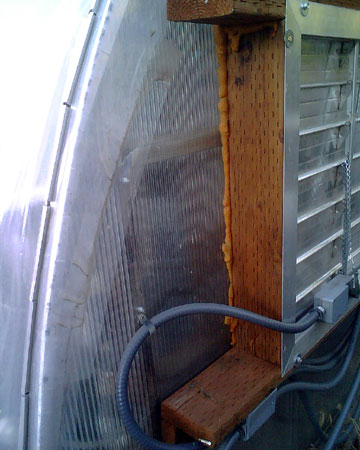
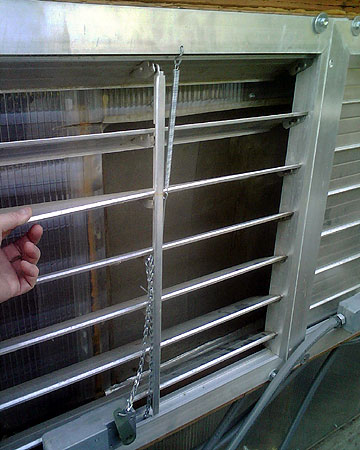
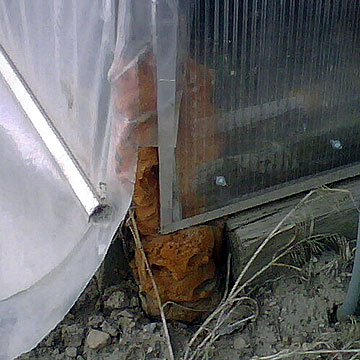
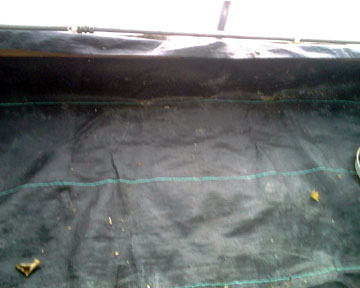
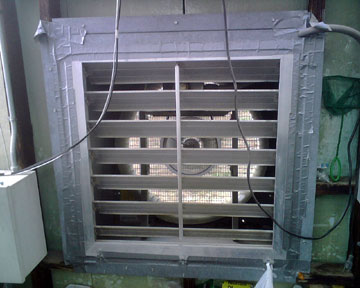
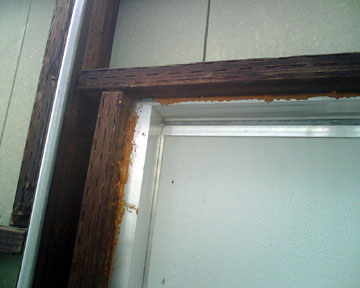
Despite your best efforts, pest will come in, and will multiply, that lead's us to level 2.
Constant and Early Control of Common Greenhouse Pests
Early control using biological controls can prevent flair ups and serious problems later. In my greenhouse this starts the mid-February. I will release a complete set of biological controls, I use the the Hobby Greenhouse Garden Pack from Hydro-Gardens. This contains 1,000 ladybugs (they eat everything bad), Guardian/Gnat Patrol (instead of the lawn patrol, these nematodes live in the potting soil and eat gnat larvae), Thrip Predators, Whitefly parasites (These have not been a problem recently, but have flared up in the past), Spider Mite Predators, and Mycostop (a soil inoculate that strengthens the roots-controls fusarium, damp-off, and phomopsis and suppresses several other soil born fungi and disease). I will also purchase a pack of yellow sticky strips and hang 2 or 3 of these throughout the greenhouse, and check them for new pests. These attract bad bugs, but the beneficial's only get caught accidentally.
I will repeat this treatment in March, April, June, August, October. Most of these will reproduce and live, but I found the best control comes with regular application.
Specific Control of Runaway Greenhouse Pest Populations
If I follow the prior schedule, runaway situations rarely happen, BUT if they do, here is what I have done, AND there are a number of pest that are not covered in the regular treatments, when they show up, specific controls are needed. Below are notes on specific treatments for specific pests. It is always amazing to see how quickly the population of a species can balloon.
Aphids - There are thousands of types of aphids, I have seen serious infestations of citrus or mellon aphids, and several common aphids that love tomato starts and small plants. Lady Bugs love aphids and will control the normal few that show up. When the population balloons, first prune out the most infected branches-plants, leaves, then I will order the Aphidius/Aphei Mix from Hydro-Gardens. It targets a broad range of aphids and in 2 or 3 weeks it will greatly reduce and eliminate this problem Aphids can be washed off to a certain extent. Some flowers and herbs are naturally repellant and can be planted.
Whiteflies - I have not had to battle this recently.
Scale - This is my current nemesis. I should have tackled this sooner. I have pruned back the worst infestations AND mixed 50% rubbing alcohol 50% water with 1 tablespoon neem oil in a squirter bottle and sprayed the leaves top and bottom. I will be ordering the Scale Insect Controls from Hydro-Gardens for on-going control, after waiting a week and washing down the plants and leaves as the neem oil will affect the beneficial's. Also, I pruned back the worst affected branches. Mine are a soft scale and the alcohol dries them out and the neem smoothers them. Next time I'll get biological's at the first sign of them.
Fungus Gnats (and Shore Flies) - There has always been a low level of fungus gnats. the regular dose of nematodes kept them in check. But I stopped the regular schedule as everything seemed under control. Well both scale and fungus gnats went crazy. To get the fungus gnats back under control, I applied Gnatrol WDG from Better Grow Hydro (bghdro.com). It took 3 treatments a week apart each to knock these back. Gnatrol is fish and plant safe (even edibles). It kills the gnats in the larvae stage, but gnats have a 3-4 week cycle, so repeated treatments are required to break the cycle. Now I will go back to the Garden Pack with the gnat patrol nematodes to put in the soil.
There are many other pests, but I have not had to deal with them yet. (except snails in the aquaponic system. Goldfish clean these up when they are small.
Another point, when I first started the gravel grow beds in the aquaponic system, I let the water level get within 1/2-1 inch of the top. At night the top of the gravel would be completely moist, creating a breeding ground. I cut down the siphon stand pipe another 1/2-1 inch so the water stays 1-1 1/2 inches below the gravel, drying out the top layer, this eliminated this breeding ground. Also, where the water flows into the gravel beds, builds up the solids and can be another place to watch. once or twice a week, I stir the gravel by the inflow so the solids wash down into the gravel where they will be broken down and unavailable to the bugs.
Greenhouse Pest Pictures
Aphids - They start on the underside of the newest most tender leaves and then progress as the infestation grows. This is especially bad, with the entire plant engulfed.
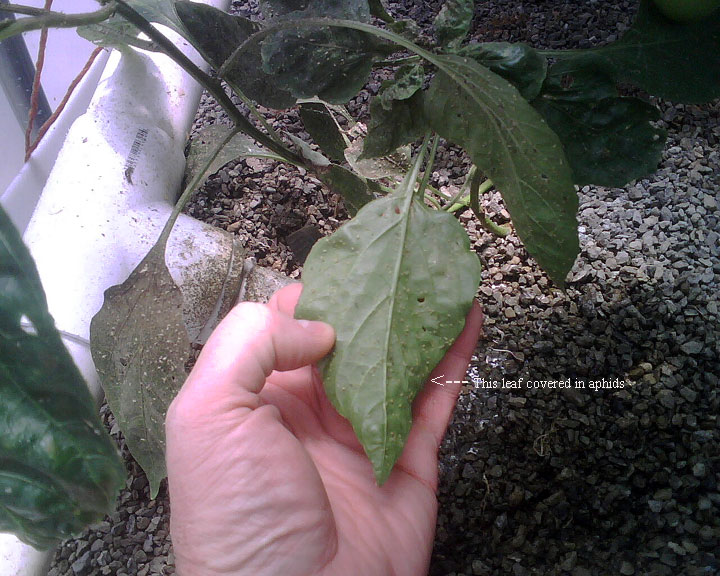
Citris Scale - generally on the topside of the leaf, along the vein.
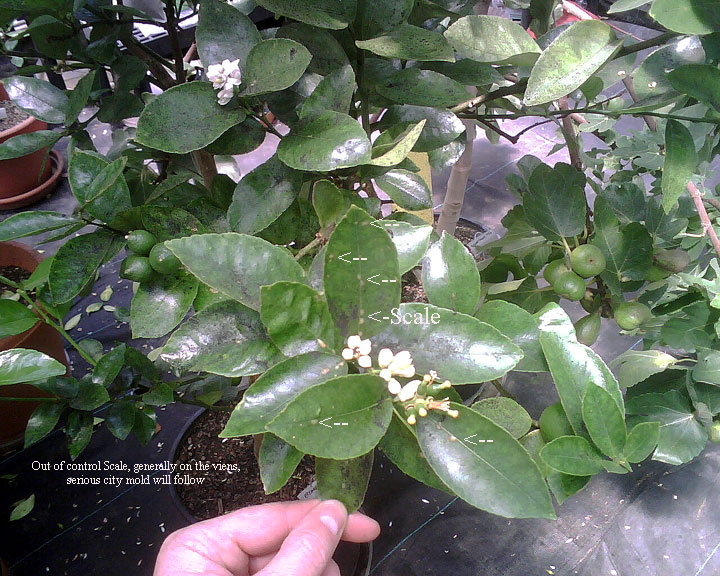
More Scale - the adults live under the armored shell they create and lay eggs that hatch out, feed and move and armor again.
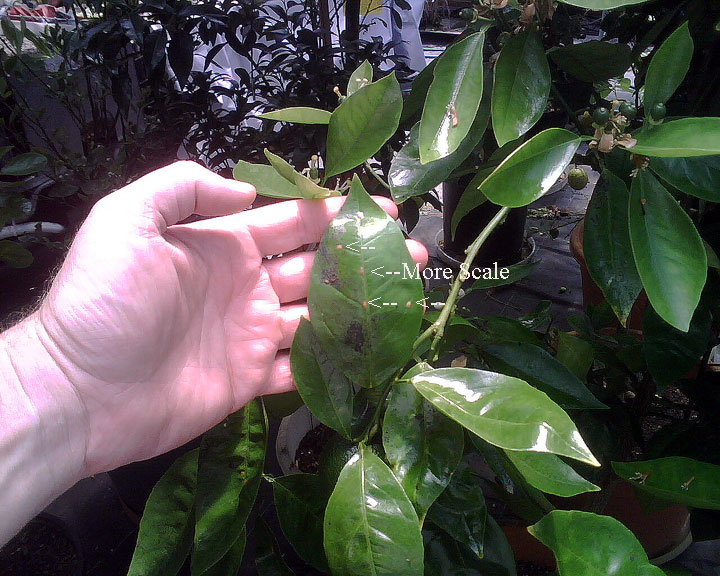
Scale on Stem - Extreme infestation
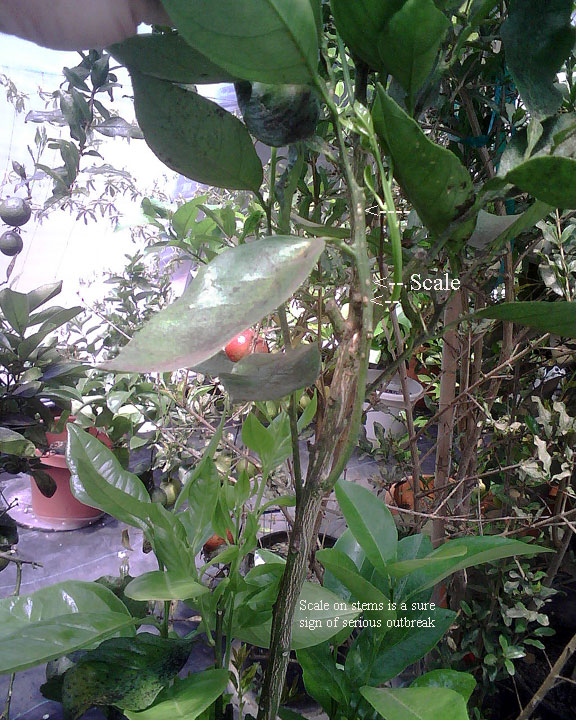
City Mold - Once other pests get extreme, then the sap that is released by there chewing, piercing and eating, promotes the growth of mold. Solve the initial pest problems, and the mold will go away.
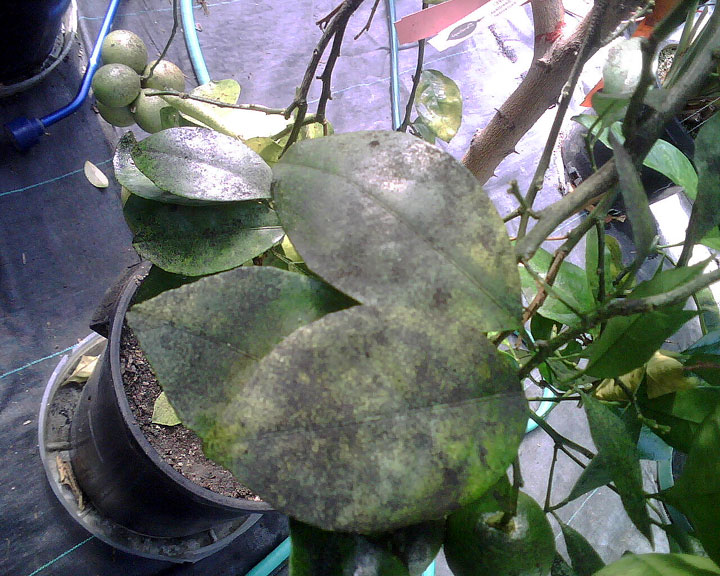
And even City Mold on the fruit - it looks bad, but washes off easily. Again get ride of the pest and the mold goes away.
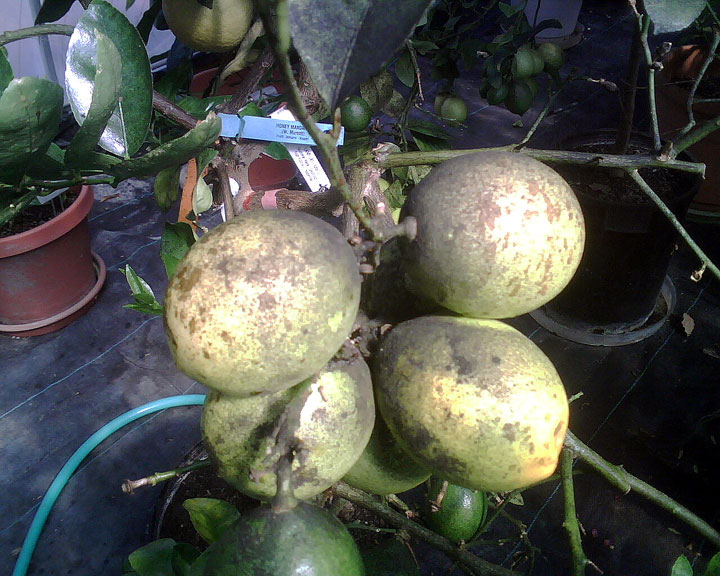
Yellow sticky cards - both to catch pests and as an early detector. These are covered with Fungus Gnats, yet another annoying greenhouse problem.
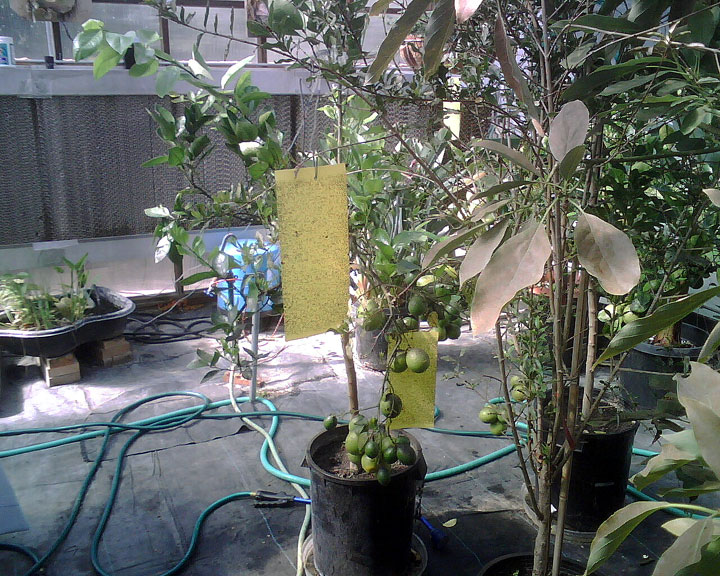
Picture of Fungus Gnat and Shore Fly's. These live in the soil/growing media, especially well watered moist media. On the left is the Fungus Gnats, this is a problem I have. I believe it came with some bags of potting mix. The shore fly's look like small fly's, the gnats have humped shaped bodies and carry their wings high, more like a mosquito than a fly.
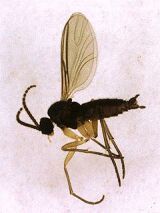 -----------------------------
-----------------------------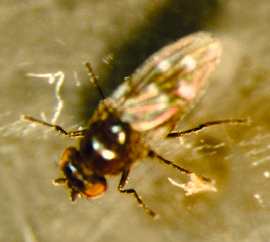
Back to Utah Aquaponics System Main Page
Detailed aquaponic system design information and plant and fish selection decisions can be found in our thread at AquaponicsHQ here: http://aquaponicsnation.com/forums/topic/802-utah-system-part-1-beginnings/